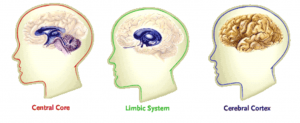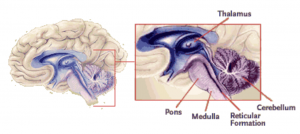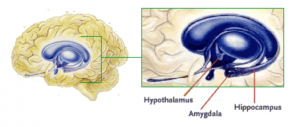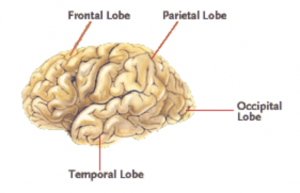Join us for conversations that inspire, recognize, and encourage innovation and best practices in the education profession.
Available on Apple Podcasts, Spotify, Google Podcasts, and more.
Your brain can be considered the most complex organ in your body and the centerpiece of your nervous system. Although your brain works as a unified whole, neuroscientists can identify areas within it that perform specific functions. Your brain is organized into three interconnected layers: the central core, limbic system, and cerebral cortex, all of which contain structures that regulate everyday life. Explore the human brain and its role in regulating your life.


The Central Core is found in all vertebrates. Its five main regions help regulate basic life processes, including breathing, pulse, arousal, movement, balance, sleep, and the early stage of processing sensory information.
•The Medulla is the center for breathing, waking, sleeping, and beating of the heart.
•The Pons triggers dreaming and waking from sleep.
•The Reticular Formation signals the cerebral cortex to attend to new stimulation and to remain alert even during sleep.
•The Thalamus begins the process of interpreting sensory information. It determines fundamental properties, such as whether something is good or bad, and then forwards the information to the appropriate area of the cerebral cortex, where information processing continues.
•The Cerebellum coordinates body movements, controls posture, and maintains equilibrium.
Research in Action:


The Limbic System exists only in mammals. Its regions mediate motivated behaviors, emotional states, and memory processes. The limbic system also regulates body temperature, blood pressure, blood sugar level, and other housekeeping activities.
•The Hippocampus plays an important role in emotion, learning, and memory.
•The Amygdala plays a role in aggression, eating, drinking, and sexual behaviors.
•The Hypothalamus monitors blood levels of glucose, salt, blood pressure, and hormones. It also helps to regulate processes in the body through its connection to the central and autonomic nervous systems and endocrine system.


The Cerebral Cortex directs the brain’s higher cognitive and emotional functions. It is divided into two almost symmetrical halves called the cerebral hemispheres. Each hemisphere contains four lobes. Areas within these lobes oversee all forms of conscious experience, including perception, emotion, thought, and planning, as well as many unconscious cognitive and emotional processes.
•The Frontal Lobe assists in motor control and cognitive activities, such as planning, making decisions, setting goals, and relating the present to the future through purposeful behavior.
•The Parietal Lobe assists in sensory processes, spatial interpretation, attention, and language comprehension.
•The Occipital Lobe processes visual information and passes its conclusions to the parietal and temporal lobes.
•The Temporal Lobe assists in auditory perception, language comprehension, and visual recognition.
Research in Action:
 The cerebral cortex plays a central role in the complex task of reading. Current research helps to explain how visual information, images of words, travels through the occipital lobe to language-processing areas found in the temporal and frontal lobes. This work may result in new approaches to treating dyslexia and other reading problems.
The cerebral cortex plays a central role in the complex task of reading. Current research helps to explain how visual information, images of words, travels through the occipital lobe to language-processing areas found in the temporal and frontal lobes. This work may result in new approaches to treating dyslexia and other reading problems.